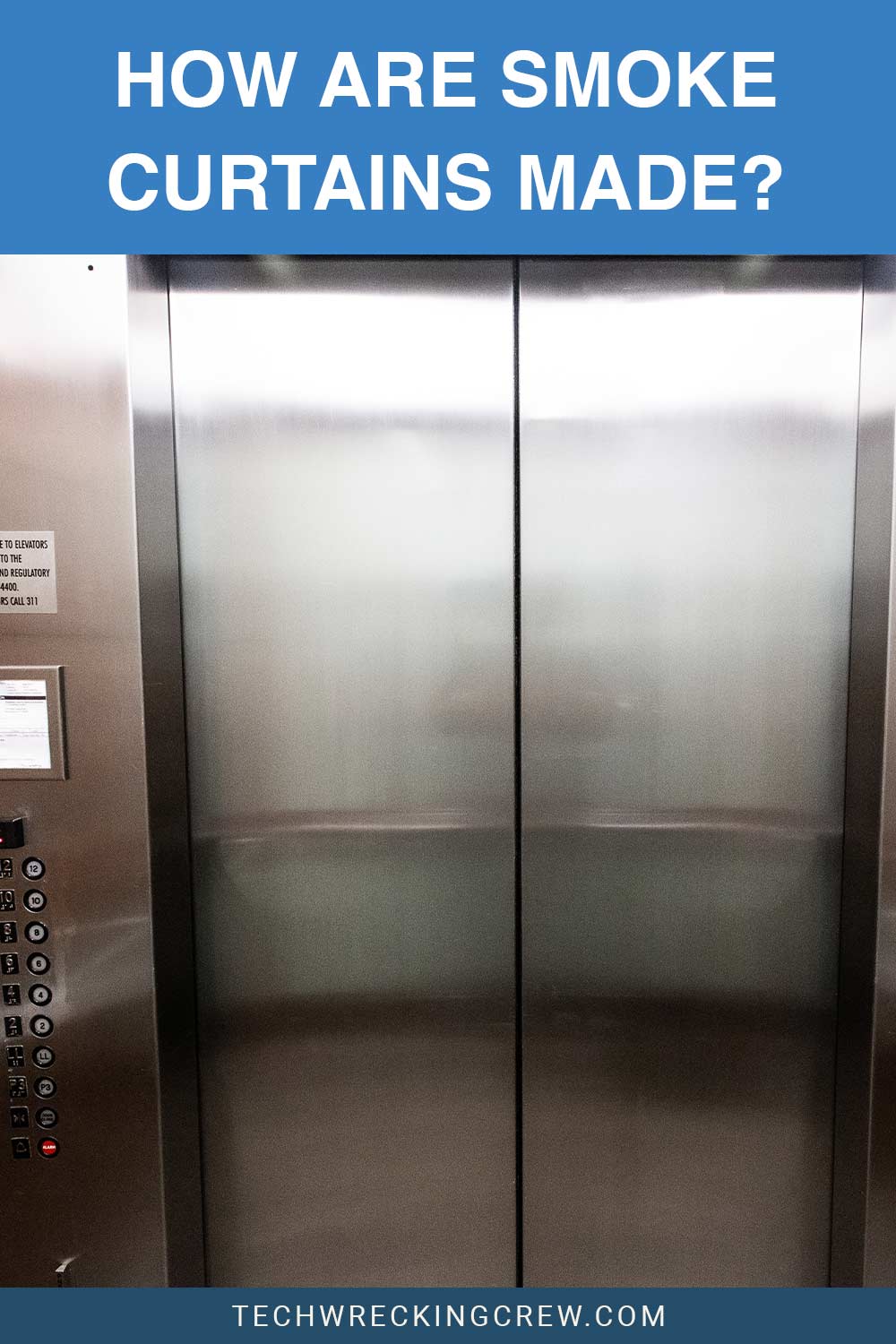There are two types of smoke curtains to consider: the elevator curtain, engineered to protect a building from smoke and fire from within an elevator shaft and prevent the spread of flames and damage.
They are made of a high-performance film that contrasts the vertical, horizontal, and perimeter smoke curtains made with a thicker fabric.
Most manufacturers and magicians will not reveal their secrets or how the materials are made. However, the materials must be produced or woven so that the product can withstand temperatures reaching four hundred degrees Fahrenheit.
When were Smoke Curtains Invented?
Depending on the definition of a smoke curtain, the first installation of an iron safety curtain would be in 1794. In contrast, the second installation would be in about 1887, when installations of these ‘safety curtains’ began happening on a broader scale.
The modern version of the smoke curtain was invented in the nineteen seventies. In contrast, an engineering challenge was issued to create a material screen that could move heated smoke from a fire away from a building without risking collapse or damage.
Today’s technology has become something of science fiction with fabric that can withstand heat from even space-related needs potentially.
Who Created It?
Today’s fabrics and smoke curtains came from a challenge out of necessity. As buildings began to get taller, each level added presented a security and possible safety threat that needed to be addressed in a fire situation.
How could a building protect itself as a fire was burning within itself, or how could a skyscraper prevent the spread of fire to all the floors above the initial flame source? Then you add the many other situations that have arisen to which a solution was needed.
The Cooper family in the 1970s invented and started an industry with the Fire and smoke curtain.
How Long Does a Smoke Curtain Last?
This question needs to be answered in multiple parts, starting with how long the smoke curtain can go without being serviced, which is about every three to four months.
Then there is the average longevity or life expectancy of the curtains, which is about fifteen to twenty years tops before there is the possibility of degradation of the materials.
Then you have how long it lasts in a fire situation at, say, upwards of one thousand eight hundred- and fifty degrees Fahrenheit, in which smoke and fire curtains are designed to last upwards of two hours with continual heat applied.
What are Its Flaws?
A little context on how smoke curtains are used, they are used to prevent damage to walls and certain valuables within a building and to seal up elevator doors. Sides in case of fire to prevent the flames from spreading and funnel the heated smoke out of the building.
The flaws are in the limitations of the material itself, as it remains stationary and can protect only so much of the building and everything within its walls.
Additionally, flaws do not apply to the curtains, for they serve their purpose and do them well; there is only so much you can ask from this product.
How Much Does it Cost?
There are different prices, and just like many installers, the installation cost will require an estimate and depends on the timing of the installation. For example, suppose the smoke curtain is a part of the original construction plan.
In that case, there is a possibility of a discount for using the product for the entire building or a deal made to use that material on multiple construction projects.
On average, the material cost is six dollars per square meter, and some higher performance-rated fabrics can run upwards of fifteen dollars per square meter.
Final Thoughts on How are Smoke Curtains Made
Fire and smoke curtains were once steel grates in front of a fire source; it was not until the 1970s that the invention of today’s skyscraper materials began protecting buildings.
The materials are known to withstand incredible amounts of heat and direct the equally hot smoke away from the building and out.
If you are shopping around for materials, remember the expensive high-performance stuff can cost around fifteen dollars a square meter but can save a life one day.
The most challenging element of today’s taller buildings is planning for disaster, fire being the most dangerous and probably of these situations.

